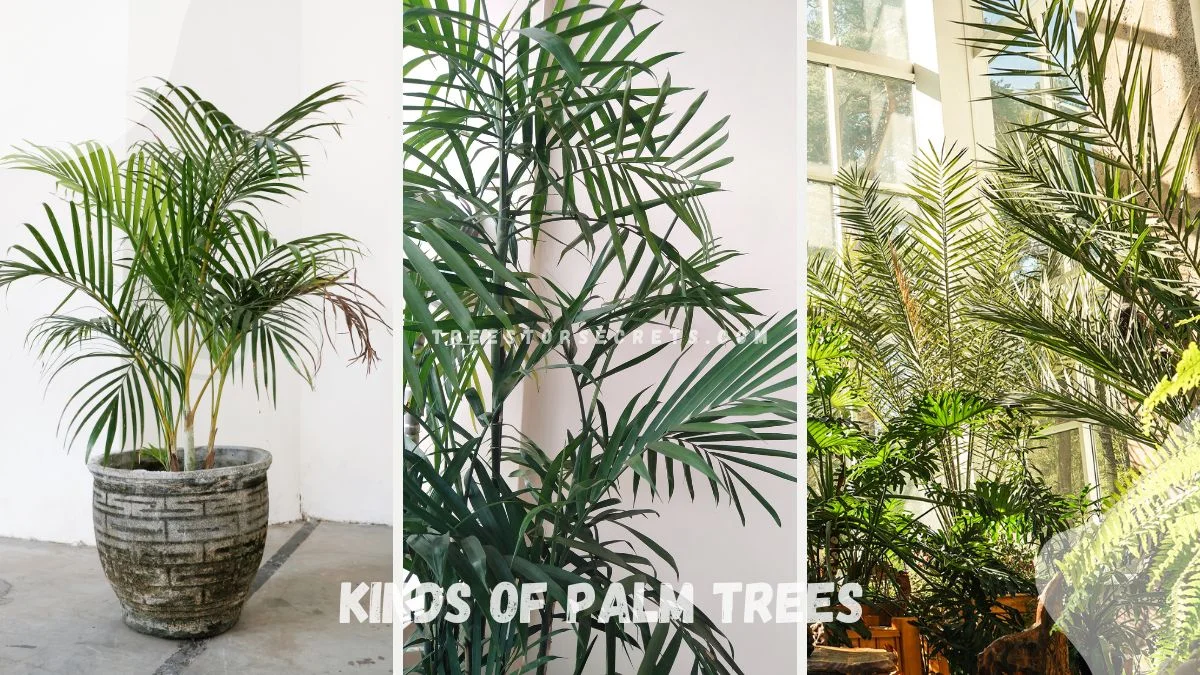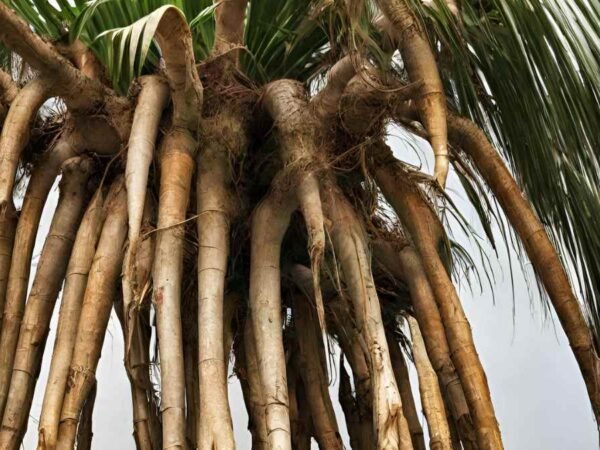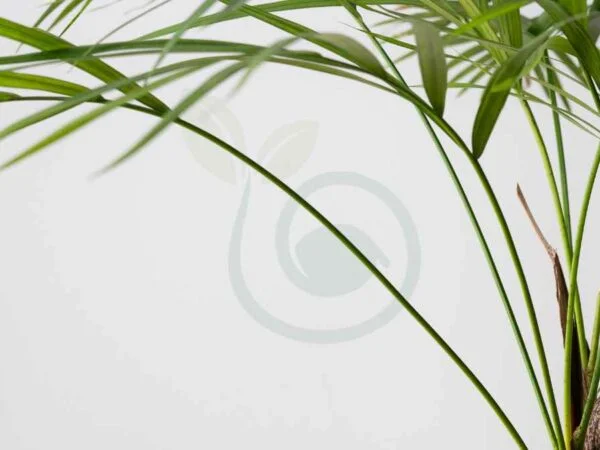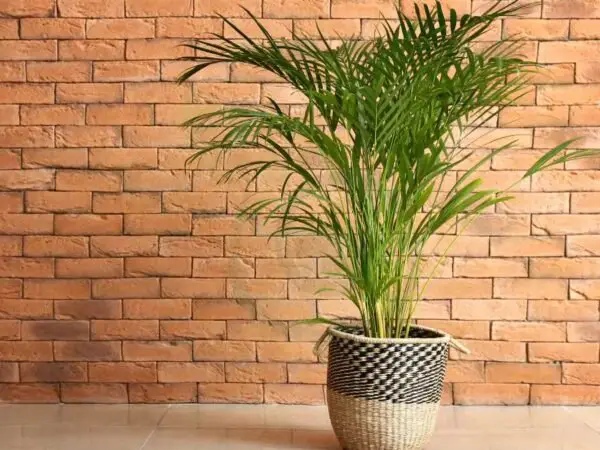How many kinds of palm trees are there? If you're curious about the number of palm tree species, including tropical palms and coconut palms with palmate leaves, you've come to the right place. Palm trees, known for their iconic appearance and ecological importance, are a diverse group with a wide range of species worldwide. Whether you're interested in their botanical variety or their aesthetic appeal in landscaping, understanding the different kinds of palm trees can offer fascinating insights. Let's explore the rich diversity of palm trees and answer the question: how many kinds of palm trees are there?
Globally, there are over 2,500 species of palm trees spread across more than 180 genera. These species range from the towering Royal Palm (Roystonea regia) to the smaller Dwarf Palmetto (Sabal minor). Palms can be categorized into different types based on their characteristics, such as fan palms and feather palms. Fan palms, like the California Fan Palm (Washingtonia filifera), have leaves shaped like a fan, while feather palms, like the Coconut Palm (Cocos nucifera), have leaves that resemble feathers. This vast array of species shows the incredible diversity within the palm family.
If you're interested in discovering more about the various types of palm trees, from their unique adaptations to their roles in different ecosystems, there's a lot more to learn. With detailed information on the growth habits, geographical distribution, and uses of different palm species, you can gain a deeper appreciation for these remarkable trees.
Key Takeaways
- Explore the Diversity: There are numerous types of palm trees, each with unique characteristics and appearances.
- Identify with Ease: Learn about palm tree identification to distinguish between different species accurately.
- Consider Tiny Palms: Special attention to tiny palms can add a charming touch to your green space.
- Popular Choices: Discover the most popular palm trees that are widely favored for landscaping and indoor decor.
- Nurture with Care: Understand how to care for palm trees properly to ensure their health and longevity.
- Eco-conscious choices: Be mindful of the environmental impact of palm trees and make sustainable choices when planting or maintaining them.
Palm Tree Overview
Species Count
Palm trees boast over 2600 different species worldwide, each with unique characteristics. They thrive in diverse climates, from tropical to desert regions. The variations in palm tree species offer a fascinating glimpse into the rich biodiversity of our planet.
- The distribution of palm tree species spans across various climates, showcasing their adaptability.
- Each palm tree species possesses distinctive traits that set them apart from one another.
Global Diversity
Exploring the global diversity of palm trees reveals their remarkable adaptations to different environments. From lush rainforests to arid deserts, palm trees showcase their resilience and versatility in thriving across various landscapes.
- Palm trees display a wide range of adaptations to survive in different environments around the world.
- The geographical distribution of palm tree species highlights their widespread presence on a global scale.
Unique Traits
Palm trees exhibit unique traits that distinguish them from other plant species, making them iconic symbols of tropical landscapes. Their leaves come in various shapes and sizes, adding to the allure of these majestic trees.
- The distinctive features of palm trees, such as their leaf shapes and sizes, contribute to their visual appeal.
- The trunk shape of palm trees varies significantly based on the species, showcasing a diverse range of forms.
Types of Palm Trees
Tiny Palms
Tiny palm trees, including dwarf and small varieties, add a unique charm to any landscape. These miniature versions of traditional palm trees are perfect for small gardens or indoor spaces. Popular tiny Palm tree species like Pygmy Date Palm and Cat Palm are excellent choices for those looking to add a tropical touch to their surroundings. Their compact size and elegant fronds make them visually appealing.
- Pros:
- Ideal for small spaces
- Easy to care for
- Adds a tropical vibe to any setting
- Cons:
- Limited height potential
- May require specific growing conditions
Exploring the characteristics of tiny palm trees reveals their adaptability to various environments. These palm tree varieties thrive in containers, making them versatile options for both indoor and outdoor decor.
Common Varieties
Among the most common palm tree species are the Coconut Palm and Date Palm Tree. These iconic trees are not only visually striking but also serve practical purposes. The Coconut Palm, known for its versatile uses from food to construction materials, symbolizes tropical paradises worldwide. On the other hand, the Date Palm Tree provides delicious fruits while adding beauty to landscapes.
- Coconut Palm:
- Provides coconuts for food and water
- Leaves used for thatching roofs
- Symbolizes tropical regions
- Date Palm Tree:
- Produces sweet dates
- Adds aesthetic value to gardens
- Culturally significant in Middle Eastern cuisines
Exploring the cultural significance of common palm tree species unveils their deep-rooted connections to various traditions and practices around the globe. From culinary uses to religious symbolism, these trees play vital roles in different societies.
Endangered Species
Certain palm tree species face threats such as over-harvesting, leading to their endangered status. Conservation efforts aim to protect these species from extinction by preserving their habitats and promoting sustainable practices. By safeguarding endangered palm tree species, we contribute to maintaining biodiversity and ecological balance.
- Conservation efforts:
- Habitat protection
- Reforestation projects
- Sustainable harvesting practices
Preserving endangered palm tree species is crucial for maintaining healthy ecosystems and preserving unique plant diversity. Each species plays a vital role in the environment, highlighting the importance of conservation initiatives.
Palm Tree Identification
Visual Guide
Get a visual overview of different palm tree species through images and illustrations. Learn to identify palm trees visually by examining their leaves, trunks, and stems. Explore a comprehensive guide with visuals to help distinguish between various palm tree varieties.
Key Characteristics
Identify crucial characteristics that aid in distinguishing palm tree species. Understand the significance of leaf shape, trunk appearance, and stem texture in palm tree identification. Recognize how these key characteristics play a vital role in classifying palm tree varieties.
Special Focus on Tiny Palms
Pygmy Date Palm
Pygmy Date Palm, a small palm tree variety, adds a touch of elegance to any landscape. Its slender trunk and graceful arching fronds make it a popular choice for both indoor and outdoor settings. This palm thrives in well-drained soil and requires moderate watering to maintain its lush appearance.
Incorporate Pygmy Date Palm into your garden by planting it in clusters or as a standalone specimen. Its compact size makes it ideal for small spaces such as patios, balconies, and courtyards. To keep this palm healthy, ensure it receives adequate sunlight and protect it from frost during colder months.
- Ideal growing conditions: well-drained soil, moderate watering
- Creative landscaping ideas: cluster planting, standalone specimen
Cat Palm
Cat Palm is known for its delicate fronds and compact growth habit, making it a charming addition to any indoor space. This palm species requires indirect sunlight and regular watering to thrive. With proper care, Cat Palm can enhance the aesthetic appeal of living rooms, offices, and lobbies.
To maintain the health of Cat Palm, keep the soil consistently moist but not waterlogged. Prune dead or yellowing fronds to promote new growth and maintain its vibrant green color. Consider placing Cat Palm in decorative pots or hanging baskets to elevate your interior decor.
- Maintenance requirements: indirect sunlight, regular watering
- Growth habits: compact growth habit
Dwarf Varieties
Dwarf palm trees, such as Mediterranean Dwarf Palm and Dwarf Majesty Palm, offer versatility in landscaping due to their small size and unique appearances. These compact palms are perfect for creating tropical vibes in limited spaces like small gardens or urban balconies.
Mediterranean Dwarf Palm features fan-shaped leaves and thrives in sunny locations with well-draining soil. On the other hand, Dwarf Majesty Palm boasts feathery fronds and prefers partial shade to prevent leaf scorching. Both varieties require minimal maintenance and add visual interest to any setting.
- Types of dwarf palm trees: Mediterranean Dwarf Palm, Dwarf Majesty Palm
- Versatility in small gardens, patios, indoor spaces
Popular Palm Trees
Coconut Palm
Coconut Palm, a standard palm tree, is renowned for its versatility and resilience in tropical climates. The healthy palm trees produce coconuts used in various ways. From culinary delights like coconut milk to non-culinary uses such as making ropes and mats, the coconut derived from this palm tree is highly valuable. In many tropical regions, the common palm trees play a vital role in daily life and cultural traditions.
Date Palm
The Date Palm holds significant historical and cultural importance as a symbol of abundance and sustenance. Dates harvested from this particular palm tree are not only delicious but also packed with essential nutrients. The many palm species of Date Palm are cultivated using traditional methods that have been passed down through generations. Nowadays, modern applications have expanded the uses of dates beyond traditional cuisines.
California Fan Palm
The iconic California Fan Palm stands out with its distinctive fan-shaped leaves, adding a touch of elegance to landscapes. Growing in arid environments, these large palm trees contribute to the biodiversity of desert regions. While the conservation status of California Fan Palm is stable, efforts are made to protect its natural habitat. In landscaping, these sized palm tree varieties are popular choices for creating visually appealing gardens in dry climates.
Caring for Palms
Protection Measures
Protecting palm trees is crucial to safeguard vulnerable species and preserve their natural habitats. Implementing protection measures helps maintain biodiversity and prevent the extinction of unique palm tree varieties. Conservation initiatives play a vital role in ensuring the long-term survival of these iconic trees.
To contribute to the protection of palm trees, individuals can support sustainable practices such as reducing deforestation and promoting responsible land use. By raising awareness about the importance of palm tree conservation, communities can work together to create a more sustainable environment for these majestic trees. Engaging in habitat restoration projects also aids in preserving the ecosystems where palm trees thrive.
- Sustainable practices aid in preserving palm tree species
- Conservation initiatives protect unique palm tree varieties
- Raising awareness supports the conservation of palm trees
Trimming Tips
Proper trimming is essential for maintaining the health and aesthetics of palm trees. Regular trimming helps prevent diseases and pest infestations, promoting overall tree health. When pruning palm tree leaves, it is crucial to remove dead fronds carefully to avoid damaging the tree.
When trimming palm trees, it is important to follow best practices to ensure optimal growth and vitality. By removing old or diseased fronds, palm trees can allocate resources more efficiently towards new growth. Regular trimming also enhances the appearance of palm trees, making them more visually appealing in gardens and landscapes.
- Regular trimming prevents diseases and promotes tree health
- Removing dead fronds aids in optimal growth and vitality
- Enhances the aesthetics of palm trees in gardens and landscapes
Environmental Impact
Endangered Palms
Endangered palm tree species face numerous challenges, including habitat destruction and illegal harvesting for the landscaping industry. Conservation efforts are crucial to protect these species from extinction. Some endangered palms include the Coco de Mer and the Madagascar Palm.
Factors contributing to the decline of endangered palm trees include deforestation, climate change, and poaching. These factors disrupt the natural habitats of these palms, leading to a decrease in their populations worldwide. Conservationists work tirelessly to combat these threats and preserve these valuable species.
Individuals can support conservation efforts for endangered palms by raising awareness, participating in reforestation projects, and avoiding products made from endangered palm species. Organizations play a vital role in establishing protected areas, conducting research, and implementing sustainable practices to safeguard these plants for future generations.
Drought-Tolerant Species
Drought-tolerant palm tree species, such as the Mexican Blue Palm and the Mediterranean Fan Palm, thrive in arid and semi-arid climates. These palms have evolved unique adaptations to survive with minimal water, making them ideal choices for landscapes in hot regions.
Drought-tolerant palms conserve water through mechanisms like reduced leaf surface area and deep root systems that access groundwater efficiently. These adaptations allow them to withstand long periods of drought without experiencing significant damage, making them resilient choices for landscaping in dry environments.
Landscaping with drought-tolerant palm trees offers sustainable solutions for creating beautiful outdoor spaces while conserving water resources. By incorporating these palms into gardens and public areas, individuals can reduce water consumption, lower maintenance costs, and contribute to environmentally friendly practices.
Fun Facts About Palms
Historical Influence
Palms have historically influenced civilizations and cultures, symbolizing victory, peace, and fertility. In ancient Egypt, palm trees were linked to resurrection and eternal life. They often appeared in art, representing triumph and royalty. Throughout history, palm trees have been central in religious practices, symbolizing resilience and growth. The date palm, for instance, is mentioned in various religious texts as a symbol of abundance and prosperity.
Indoor Palms
Indoor palms offer a touch of nature within indoor spaces, enhancing air quality and aesthetics. Popular indoor palm species include the Areca Palm, Majesty Palm, and Parlor Palm. These palms thrive in indirect light and require regular watering to maintain their lush appearance. Incorporating indoor palms into home decor adds a tropical flair, creating a calming and refreshing ambiance. To care for indoor palms effectively, ensure they are placed in well-draining soil and avoid overwatering to prevent root rot.
Final Remarks
In exploring the diverse world of palm trees, you've gained insights into various types, identification methods, care tips, environmental impacts, and fun facts about these iconic plants. By understanding the unique characteristics of different palm species and how to nurture them, you can enhance the beauty of your surroundings while contributing positively to the environment. Remember to continue learning about palms and share your newfound knowledge with others to spread awareness about these remarkable trees.
Take action today by planting a palm tree in your garden or supporting conservation efforts to protect these valuable assets. Your involvement can make a difference in preserving these botanical wonders for future generations to enjoy.
Frequently Asked Questions
FAQ
How many types of palm trees are there?
There are over 2,500 species of palm trees worldwide.
Are tiny palms a popular choice for indoor decoration?
Yes, tiny palms are gaining popularity as indoor plants due to their compact size and aesthetic appeal.
What are some popular palm tree species for landscaping?
Popular palm trees for landscaping include the Queen Palm, Date Palm, Coconut Palm, and Windmill Palm.
How can I identify different types of palm trees?
You can identify palm trees by looking at their fronds, trunk characteristics, and overall growth patterns unique to each species.
Do palm trees have any significant environmental impact?
Palm trees play a crucial role in maintaining biodiversity, providing habitats for various wildlife species, and contributing to ecosystem health.
Image Source: Paid image from CANVA





